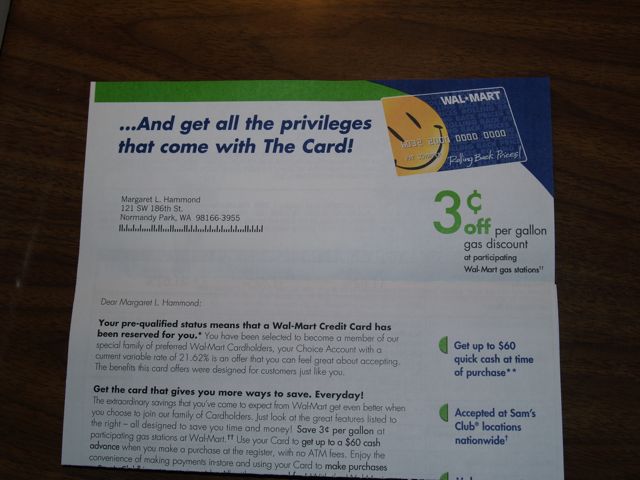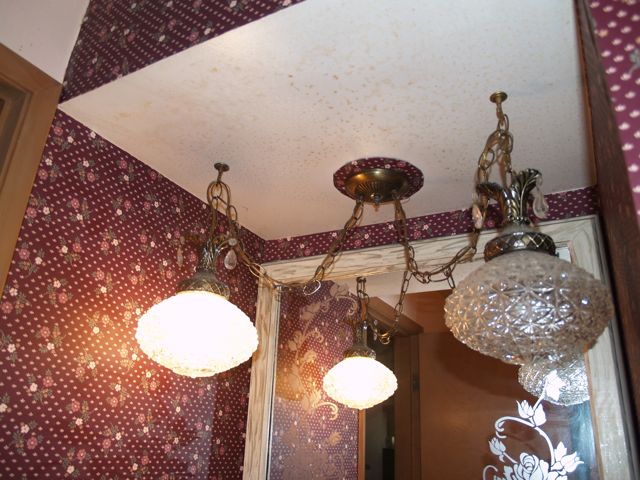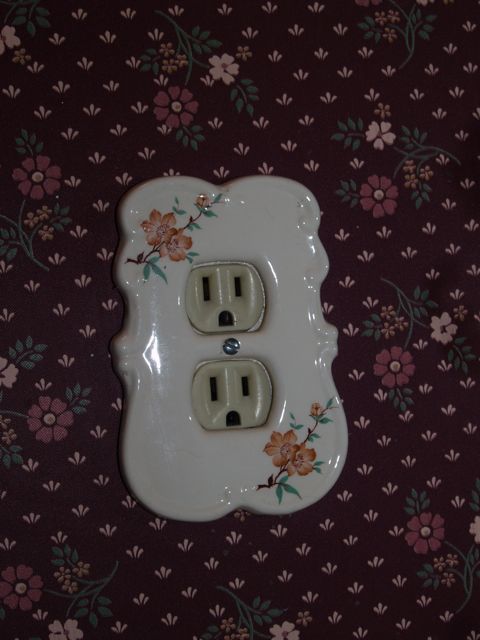True Confession Time here: I’ve long been a closet fan of the pseudoscientific “Mysteries of the Unknown”-type programs that have come and gone over the years. I cut my teeth in this particular genre at a young age. At a time when my wife was devouring The Lord of The Rings, my friend Mike Pearson’s mom decided, for whatever reason, to treat us to a dramatic reading of The Amityville Horror. My first personal sojourn into the literature was a Scholastic Books title called Monsters, Giants and Little Men From Mars. There was also a panoply of motion pictures in the oeuvre released around that time. Bigfoot, The Mysterious Monster; Chariots of The Gods; The Amazing World of Psychic Phenomena. All of it extra-chewy mind taffy for the over-nourished imagination. With similar sticky and corrosive results.
Now, as an adult, I get my fix with the cream of the newest crop of these things, The Sci Fi Channel’s Ghost Hunters.
Ghost Hunters is a great program that attempts to debunk claims of hauntings or paranormal phenomena in the places the team (The Atlantic Paranormal Society, or TAPS) visits. They use a combination of modern sensing and recording technology and accumulated lore regarding the circumstances of hauntings. The whole thing certainly might be a contrivance, like the “Alien Autopsy” video of the 90’s, but I don’t think so. For one thing, the “actual” paranormal events that TAPS does manage to capture in some form or another are never the kind of barn-burner that a TV producer would dream up. Many episodes end with TAPS founders Jason Hawes and Grant Wilson concluding that they could find no evidence of paranormal activity, much less a bona-fide haunting; no one actually in charge of selling this program to advertisers would dare do such a thing if left to their own devices. But the evidence they do collect is often amazing: the silhouette of a figure in period clothing seeming to stand in an empty doorway of a Civil-War-era morgue, visible only via the infra-red camera; a camp chair moving a foot or more across the floor of a supposedly haunted lighthouse; the Digital Audio Tape deck slung across the torso of a of a sound man being propelled upward into his face by no visible means, knocking him over. When things do happen, they can be quite compelling. And when they don’t—which is much of the time—no one tries to make more of it than it really is.
By contrast, if you haven’t yet done so, you simply must take in at least a single episode of Arts and Entertainment Network’s new blockbuster, Paranormal State. Try not to do it during dinner, though, or you’re likely to asphyxiate on a piece or broccoli while overcome with a fit of the giggles.
The contrast between TAPS and the team from the Penn State Paranormal Research Society (totally unaffiliated with Penn State University so far as I can tell; I can’t fathom why they let these bozos even mention their school), the focus of the A&E program Paranormal State, could not be more glaring, nor more amusing. Where TAPS appears to be founded and staffed largely by level-headed adults attempting to use technology and Occam’s Razor to uncover the true nature of the cases they investigate, PPRS would seem by all appearances to be a gaggle of peri-hysterical post-teenagers using technology to tart up a most un-hidden agenda of faith-based witch hunting and the sowing of low-grade panic. And probably some other hyphenated stuff I couldn’t come up with on the spur of the moment.
The Penn State Paranormal Research Society is run by a guy named Ryan Buell. According to the lead-in for Paranormal State, he was terrified by paranormal phenomena that happened to/around him as a child, and has been searching for “the truth” ever since. This may be presumptuous and inappropriate, but it is the consensus around our household that the paranormal phenomena that so tormented young Ryan was probably Satan telling him to touch another boy’s wiener. Mr. Buell has that pent-up, overly zealous, hyperreligious and semidissociated affect that would probably best be cured with a long sensual massage by a sleek male Penn State Swim Team member. We could be wrong, of course, but ’round these parts Paranormal State is known as Latent Homosexual Ghost Hunters.
This conviction on our part lends so well to the overall theme of the program, which seems to be, “human and nonhuman spirits lurk around every corner, just waiting for our crack team of nineteen-year-olds to come in, sit round the house asking questions to the air, shoot some low-light video, then banish them forever with a blessing, some holy water on the door frames and some religious medals buried in the yard.” No shit, this is how every episode ends; PPRS and household members holding hands in prayer circles, telling the spirits to move on. Nothin’ to haunt here, Buddy, getcher ass movin’. Oh, and a “Director’s Log” entry overdub by Mr. Buell, recorded with that hoary old staticy “over intercom” voice effect that was super-popular on Nine Inch Nails albums in the 90s, talking about how satisfied he is with the results of his team’s efforts.
The single finest example of the hooey that this show—and similar endeavors of this particular stripe—promulgates is “Dead Time”. The PPRS team conducts the bulk of its “investigation” at 3:00am, the “Anti Hour”. This is the hour at the opposite end of the clock from 3:00pm, the hour at which Christ was supposedly crucified, and is supposed to be the time of highest spiritual activity and therefore the best time to try to contact the spirit world. Gotta wonder: why do you suppose Elementals, Residuals, Shadow People, and the myriad animal spirits from the Native American pantheon might possibly give a teeny-tiny tin shit when Christ was killed? But supposing they all do, that every scintilla of discorporated spiritual energy in the Universe, intelligent or otherwise, is tied directly like a celestial EEG to the moment of Christ’s death: 3:00pm. And that, therefore, they all reach their own pinnacle of terrestrial activity at the “opposite” hour, 3:00am. Would that be 3:00am Pacific, Mountain or Eastern? Or is it Jerusalem Local? Greenwich Mean? Do you take Daylight Savings into effect? Believing that the time of the Crucifixion warps itself temporally around your particular point on the globe is exactly the kind of noodle-brained thinking that gives real spirituality a bad name. Like believing that praying for your football team will actually help them to make the playoffs, such a philosophy is wanking at best, sacrilege at worst. And it would seem to have little to do with your chances of capturing some usable EVPs.
The technology aspect is one of the most amusing. TAPS uses an array of devices—infrared and night-vision video, electromagnetic field (EMF) detectors, laser spot thermometers, digital audio devices—to try to capture phenomena for later analysis. PPRS brings all of the same sort of equipment along on their jaunts as well; they just don’t seem to use it to capture evidence. Instead, their equipment seems to be mostly used to capture footage of each other as they sit in prayer circles, exhorting the purported spirits to come forth and reveal themselves. There is little to no empiricism in their endeavors; rather, the whole thing reads like a slumber-party Ouiji Board session. A group of kids is sitting in a circle in a haunted house. One says, “I just got a chill.” Another one then says, “Yeah, me too!” Minutes pass, then a third student will say, “did anyone else just hear breathing?” and a fourth will exclaim, “Yeah, yeah, I did.” Then their leader rolls his eyes toward the ceiling and says in sepulchral tones, “are you the spirit who is plaguing this family?”
When the members of PPRS do manage to use their equipment in the actual pursuit of ghosts, they are just as likely to misuse it. I watched an episode recently where the team was sitting in a house reported by its owners as haunted (here’s another wonderful little bit of tid: while all of these types of shows use creepy music and sound effects to add “atmosphere” to the program, Paranormal State goes all-out, off the plank and right the fuck overboard with it. Watching the show is like listening to Disney’s old “Chilling Thrilling Sounds of the Haunted House” album) and one of the team was flailing a FLIR camera around, trying to get an infrared image of the source of some spooky sound they heard. Over the infrared-enhanced video of an upper corner of the room, the student is heard to say, “the temperature’s dropping!” (In case you aren’t up-to-date on ghost lore, it is theorized that some spirits may draw thermal energy out of the surrounding air when trying to manifest themselves, which may be the source of the “cold spots” often reported at the scene of hauntings.) Problem is, a FLIR camera is not a thermometer: it can give you the temperature of a specific surface, but it does not read the ambient temperature of the air. The girl wielding the FLIR was waving it around, pointing the thermal sensor at various points on the wall. Those points just happened to be progressively cooler, which is why the temperature readout dropped from a high of about 73 to a low of about 66. Spooooooky. 🙄
They never, ever seem to capture even the most remotely categorizable evidence on all of their high-tech toys. A motion detector will go off upstairs, but they either won’t have a camera trained on the area or it won’t capture anything (which leads one to the obvious question: why would a spirit which had sufficiently physically manifested itself to set off a motion detector not also be visible to a camera? Is it the ghost of a dead Predator?). Someone will distinctly hear a voice saying the name “Katie” over their headphones, but the audio clip will never be replayed for the benefit of the TV audience. In one episode, an infrared imaging device reveals a strangely hand-like outline on a wall just before the music swells and they cut to commercial; after the break, the outline is never mentioned again, leading one to deduce that it was probably exactly that: a thermal handprint left by one of the team or the A&E crew. Ha ha, made you stay through the ads!
The PPRS also relies heavily on the use of mediums—that most evocative and ultimately unverifiable of spook detectors—which is another major contrast between themselves and TAPS, who at most will avail themselves of high-strung and laughably melodramatic local “expert” Barry Fitzgerald on their spin-off show Ghost Hunters International. PPRS’s stable of prevaricating cold-readers is headed up by (the also not [totally {gay}]) Chip Coffey. Coffey is a master of the sacred and ancient art of walking into a house, squeezing his eyes shut and telling Buell, “Something here doesn’t want you here. It’s going to try to break up your team, to put you off your stride. It knows you’re here, and it doesn’t like it.” You know it’s going to be a good time when Chip arrives on the scene. Someone really needs to throw together a drinking game around his most popular phrases.
I’ve kvetched long enough. Personally, I tend to believe in the existence of ghosts and other paranormal-kind stuffs, based on some personal and shared experiences. But what the dedicated airheads of Paranormal State do isn’t investigation; it’s the scientific equivalent of standing in a darkened bathroom and chanting “Bloody Mary!” ten times. With twenty thousand dollars’ worth of A/V equipment and a camera crew in there with you. But this is no reason to not watch the show, oh Heavens to Besty, no! I record every episode. They’re hysterical, in every sense of the word.
The theory around our house is that funniness can neither be created nor destroyed. This has helped us to develop the bare bones of a Unified Funny Theory for TV shows, which states in part that not all TV comedies can be equally funny all of the time in a single broadcast time period. If a given weekly episode of South Park is funny, then The Boondocks for that week is likely to suck, and vice versa. If both Boondocks and South Park are dry holes that week, then The Simpsons is likely to be an absolute gasser.
At odds with this theoretical model is the presence of shows that are supposed to be serious, but in fact are so bad they’re hilarious. This form of zero-point hilarity seems not to require the drawing off of essential funniness from adjacent comedic programs, but instead grows in inverse proportion to the desire of the producers to generate serious dramatic programming, seemingly in violation of the laws of entertainment physics.
Hence, Paranormal is not only a knee-slapping good time, it’s bleeding-edge Science—although perhaps not the type its progenitors intended–in the making. Come along for the ride, won’t you? I promise—really promise—it won’t be a bit scary. 😛
 Uncle Andrew
Uncle Andrew



 Margaret
Margaret

 flooring, new (not with dangling cut glass balls)
flooring, new (not with dangling cut glass balls) light fixtures, and (will the excitement never end!) PAINT (thus removing these eyesores)
light fixtures, and (will the excitement never end!) PAINT (thus removing these eyesores)
 . Now this part I am genuinely excited about.
. Now this part I am genuinely excited about.
 off of the walls in my study and painting at which point I’ll be moving my office back into my office and deciding whether or not I really want to go so far as to peel the (not so hideous) wallpaper off of the walls in Andrew’s study and painting that room too.
off of the walls in my study and painting at which point I’ll be moving my office back into my office and deciding whether or not I really want to go so far as to peel the (not so hideous) wallpaper off of the walls in Andrew’s study and painting that room too. will finally be moving OUT of my house.
will finally be moving OUT of my house.